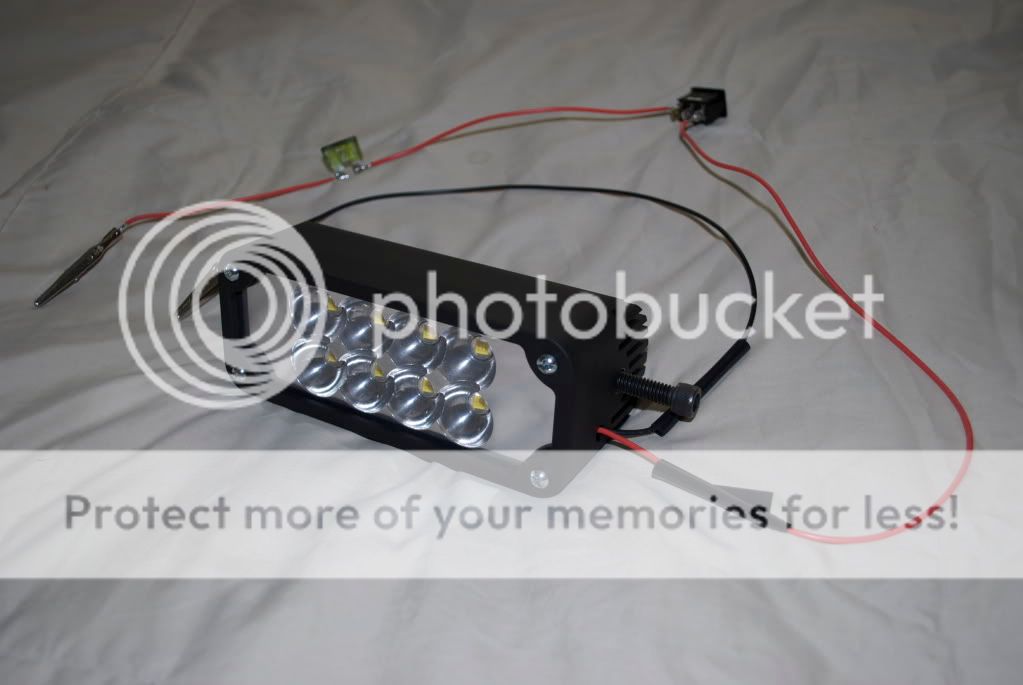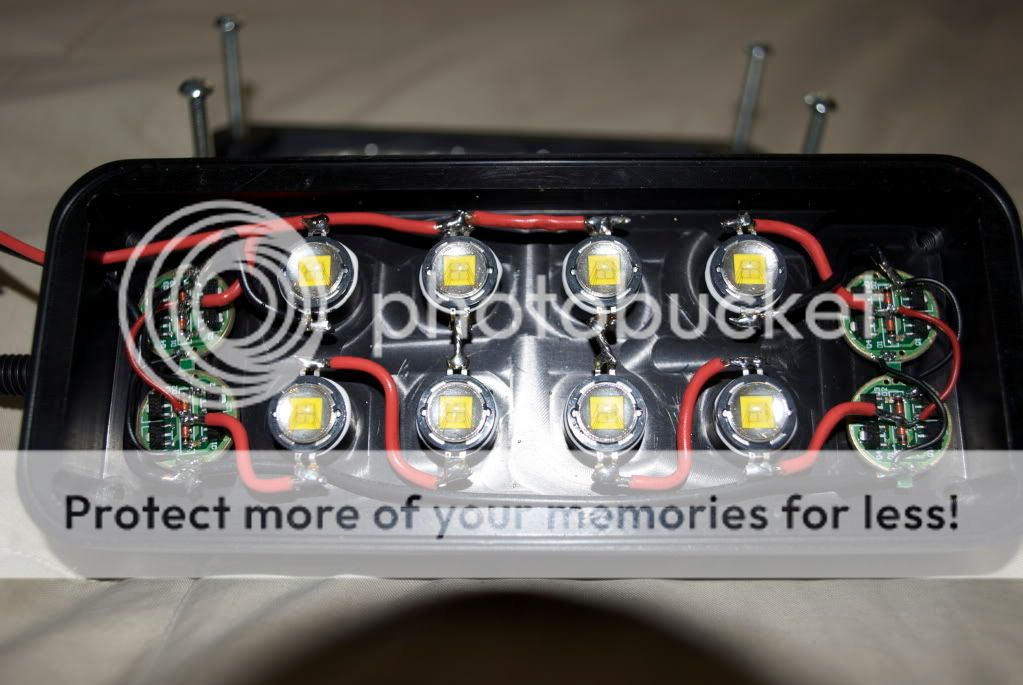LEDobsession
Enlightened
Ok. Im back from Canada and Im officially trying to do a little test market with these. I want to make 10 or so (I can probably sell 2 to a buddy), so maybe a total of 12.

This light, being the first and technically my prototype, will be somewhat altered for production. The fins, wiring connection, reflectors/optics, water sealing, etc. will be what Im changing. Nothing too major but enough to put it to where I would be very comfortable in the position of selling them.
What I really need to know is, how many people would very seriously be interested in purchasing one.
The cost I'm aiming for is US $600.00 for a 6 inch light using 8 Seoul Semiconductors P7 Series emitter producing (my guess) 7000 lumens.
They will be Black Anodized (unless you would like to pay the extra for color anodizing) and will most likely have my Logo - Solaris Series by Insane Lighting - laser engraved on the anodizing and possibly "Custom Built by Trevor Hirschi espesially for __name__". If you have anything else you would want lasered on, you could email me the text/image of your choice and I can have it engraved on for a little extra (whatever by buddy charges me for it).
If there is enough interest, I will provide as much specifications as I possibly can at the current time.
So, my question is, Who wants one?
Trevor Hirschi
Insane Lighting
Moderators: I had no idea where to put this.

This light, being the first and technically my prototype, will be somewhat altered for production. The fins, wiring connection, reflectors/optics, water sealing, etc. will be what Im changing. Nothing too major but enough to put it to where I would be very comfortable in the position of selling them.
What I really need to know is, how many people would very seriously be interested in purchasing one.
The cost I'm aiming for is US $600.00 for a 6 inch light using 8 Seoul Semiconductors P7 Series emitter producing (my guess) 7000 lumens.
They will be Black Anodized (unless you would like to pay the extra for color anodizing) and will most likely have my Logo - Solaris Series by Insane Lighting - laser engraved on the anodizing and possibly "Custom Built by Trevor Hirschi espesially for __name__". If you have anything else you would want lasered on, you could email me the text/image of your choice and I can have it engraved on for a little extra (whatever by buddy charges me for it).
If there is enough interest, I will provide as much specifications as I possibly can at the current time.
So, my question is, Who wants one?
Trevor Hirschi
Insane Lighting
Moderators: I had no idea where to put this.



 You don't have to come up with a battery pack at all. Leave the power supply to the end-user. If you spec it to run off 12 volts, I'll grab a 12 volt pack; if you spec it for a 14.4/14.8 volt pack, I'll grab a pack with that voltage. I'll take care of the maintenance/charging. I would absolutely *love* three LEDs with excellent heatsinking, putting out at or just below 2,000 lumens. If we assume 700 lumens apiece, 700*3 = 2,100 lumens, which I think is very reasonable.
You don't have to come up with a battery pack at all. Leave the power supply to the end-user. If you spec it to run off 12 volts, I'll grab a 12 volt pack; if you spec it for a 14.4/14.8 volt pack, I'll grab a pack with that voltage. I'll take care of the maintenance/charging. I would absolutely *love* three LEDs with excellent heatsinking, putting out at or just below 2,000 lumens. If we assume 700 lumens apiece, 700*3 = 2,100 lumens, which I think is very reasonable.